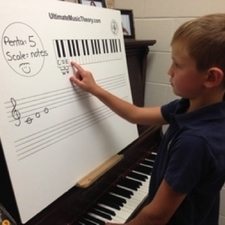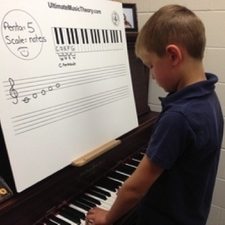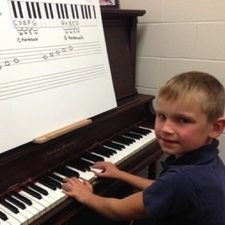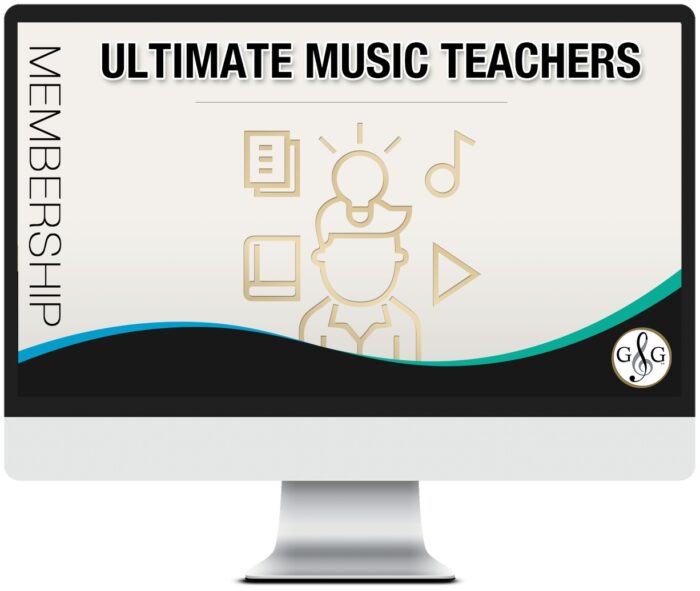Kinesthetic Learner – Learning Styles #3

Kinesthetic Learner – Learning Styles Blog #3
Welcome to Blog #3 - the Kinesthetic Learner. This is the third blog in my Series on Learning Styles. In Blog #1, we explored the Visual Learner. Blog #2 was the Auditory Learner. In this Blog, we will discuss the Kinesthetic Learner!
Do you have a student that likes to play their music all over the piano? Do you ever get motion sickness while watching your student stand, then sit, then spin, then rotate, then flip…all while completing their theory? Do you have a student who doesn’t “get it” until they actually “do it”? Then you probably have a Kinesthetic Learner (or a student with a strong Kinesthetic Learning Style!).
Kinesthetic Learners often have great hand-eye coordination. They typically love experimenting and are good at sports, drama and the arts. Their high levels of energy will make for a fun lesson time.
You may have noticed that there are no “empty white spaces” in any of the Ultimate Music Theory Workbooks or Exam Series Books. That is because the Kinesthetic Learner likes to doodle in empty spaces. An empty space is a distraction, so we don’t have any! (PS - check out our "Teacher Packs" for lots of extra savings!)
Exploring Pentascales with the Kinesthetic Learner

The Kinesthetic Learner benefits from playing songs in different Pentascales Patterns. This creates a musical outlet for their need to experiment!
The Kinesthetic Learner enjoys playing “outside the boxed position”. Playing in different Pentascales allows them to move around the keyboard.
Pentascales are introduced on Page 78 of Prep 1 Rudiments. To support your Kinesthetic Learner in “getting it”, have them “do it” on the Ultimate Music Theory Whiteboard.
Jaydon is a Kinesthetic Learner who loves using the Whiteboard to “do it” himself in order to “get it”.
To explain the C Major Pentascale to a Kinesthetic Learner:

Start by writing C on the staff and on the keyboard.
Have the student play C on the piano, and then play the note that is a whole step (whole tone) above C (D). Write that note on the staff and on the keyboard. Use the square bracket to indicate a whole step (whole tone).
Complete the C Major Pentascale one note at a time on the keyboard and on the staff while the student plays the distances on the piano (C └┘ D └┘ E ͝ F └┘ G).
A Kinesthetic Learner will enjoy playing the Pentascale at different pitches on the keyboard (high or low) AND using different articulation (staccato or legato).

Once the student has explored HOW to write and play the C Major Pentascale, repeat with G Major and then F Major.
The Ultimate Music Theory Workbooks work with students of all Learning Styles.
Taking theory concepts to the piano and using them with a student’s practical work enables students to become better musicians.
Theory + Practical Application = Success!
Supporting Your Kinesthetic Learner

In the UMT Supplemental Series, we have created the resources for RCM Teachers to use the Ultimate Music Theory Series to prepare their students for the Royal Conservatory of Music Theory Syllabus requirements.
In this series, we introduce students to So-La & Ti-Do! These 2 little Eighth Notes make learning and playing "off bench" games so much fun. Use So-La & Ti-Do to help focus your fidgeting students! Here are some tips that are working like magic for me:
- So-La Says to play this again with even more dynamics!
- Ti-Do Tempo Time! Let's play this Adagio, and then Andante, and then Allegro!
- So-La Says to look carefully at your work - did you transpose all the articulation?
- Ti-Do is Telling you to try this again.
Ultimate Music Teachers Membership
♪ LEARN ♪ PLAN ♪ TEACH ♪ GROW
The One & ONLY Ultimate Music Teachers Membership
To Become A UMT PRO!
Your Success Path Starts Here - Go To TeachUMT.com Today!
Let me know your favorite "So-La and Ti-Do Sayings"!
Keep on Learning... With a Smile and a Song!
Shelagh McKibbon-U'Ren



You are the best
Thanks so much for writing about this. So helpful